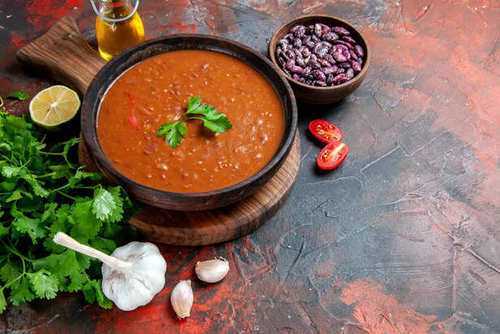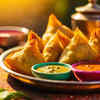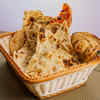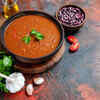
India is famous for its diverse culinary offerings, featuring flavors that excite taste buds across the globe. However, what if we revealed that some of your favorite "Indian" dishes are not actually Indian? Get ready to be surprised as we explore the reality behind seven foods you believed were local but in fact have origins elsewhere.
1. Samosa

(Image Source : Pixabay)
Ah, the cherished samosa. This crunchy, golden triangle filled with spiced potatoes is emblematic of Indian chai breaks and rainy season cravings. But get ready—the samosa’s beginnings are not Indian! It actually originates from the Middle East, where it was referred to as ‘sambosa’ and contained meat. The dish made its way to India through traders in the 13th or 14th century and transformed into a vegetarian version to cater to regional tastes. Nowadays, samosas are definitively Indian, yet their origins reveal a different narrative.
2. Naan

(Image Source : Pexels)
No Indian meal appears complete without a slice of naan, smeared with butter or garlic. However, naan’s tale starts long before Indian tandoors. This light bread has its roots in Persia and was brought to India by the Mughals. Persian rulers enjoyed naan with kebabs, and it’s this royal legacy that introduced naan to Indian households. Although we’ve certainly mastered the art of naan, it’s intriguing to recognize that its journey began in another land.
3. Chicken Tikka Masala

(Image Source : Pexels)
Did you know that the famous Chicken Tikka Masala, frequently regarded as the pride of Indian cuisine, is claimed to have been created in Scotland? Yes, you are reading that correctly! The story goes that a Bangladeshi chef in Glasgow devised this creamy, tangy dish to please a diner who found conventional chicken tikka too dry. The dish swiftly rose to global prominence and became a mainstay in Indian eateries around the world. While it’s unquestionably delectable, its origin
narrative isn’t as Indian as one might assume.
4. Jalebi

(Image Source : Pexels)
This syrupy, spiraled dessert is a staple during Indian festivals and weddings. But jalebi, known for its delightful crunch and sugary sweetness, has a surprising Persian connection. It originated as ‘zalabiya’ in Persia and made its way to India during medieval times. Indians, of course, gave it their own twist with desi ghee and saffron, turning it into the festive favorite we know today.
5. Rajma (Kidney Beans)

(Image Source : Freepik)
Rajma chawal is considered the ultimate comfort dish for numerous Indians. But were you aware that kidney beans are not indigenous to India? They were introduced to the subcontinent from Central America by Portuguese traders. Over the years, Indians perfected the technique of cooking these beans with a spiced tomato sauce, creating the beloved rajma masala. Although its origins are far removed from Indian land, it is now an essential aspect of our culinary heritage.
6. Gulab Jamun

(Image Source : Pexels)
This dessert that melts in your mouth, drenched in rose-flavored syrup, is a popular choice at weddings throughout India. Nevertheless, the origins of gulab jamun can be traced back to the Middle East.. It was inspired by the Persian dessert ‘luqmat al qadi,’ a fried dough ball soaked in honey syrup. When Persian chefs brought it to India, they adapted it with khoya (reduced milk solids) and saffron, giving it the rich and creamy texture we cherish today.
7. Chai (Tea)

(Image Source : Freepik)
Hold tight to your teacups because chai, the drink that energizes India, isn’t originally from India either. Tea plants originate from China, and tea consumption gained popularity in India only during British colonial times. The British set up tea plantations in Assam and Darjeeling, marketing it as a “quintessentially Indian” drink. Indians incorporated spices such as ginger, cardamom, and cloves, resulting in the famous masala chai. Although we have made it our own, its roots can be traced back to ancient China.
These revelations may leave you feeling a little betrayed, but they also highlight the beauty of cultural exchange. The evolution of these foods shows how India has absorbed global influences and made them uniquely its own. From the Middle Eastern samosa to the Central American kidney bean, India’s culinary journey is a testament to our adaptability and creativity.
So, the next time you bite into a samosa or sip on chai, remember the fascinating stories of migration, adaptation, and transformation that brought these beloved foods to your plate.
 India is famous for its diverse culinary offerings, featuring flavors that excite taste buds across the globe. However, what if we revealed that some of your favorite "Indian" dishes are not actually Indian? Get ready to be surprised as we explore the reality behind seven foods you believed were local but in fact have origins elsewhere.
India is famous for its diverse culinary offerings, featuring flavors that excite taste buds across the globe. However, what if we revealed that some of your favorite "Indian" dishes are not actually Indian? Get ready to be surprised as we explore the reality behind seven foods you believed were local but in fact have origins elsewhere.






